










































































who service our buildings aren’t expected to wind down. According to the Bank of Canada, high inflation is expected to stick around for a while yet. Add on the minimum wage hike that took effect on October 1 (up 50 cents to $15.50 per hour) and it's fair to say that contractors, from security to cleaners, are facing significant labour costs they will need to account for.
At the Condo Conference in fall, industry members at a staffing seminar noted that the minimum wage hike is 'well below the industry average' for some trades, which means more competition against retail, hospitality, and other sectors. Condos can expect the reality of worker turnover coupled with budget challenges due to the inflationary costs for services.
On the topic of labour, we shine a light on management and human resources for this issue. One article discusses how to build strong relationships with contractors in today’s market. We also look at the potential for flexible staffing models among managers, with potential solutions to help retain skilled talent and ease the labour shortage.
We also turn to rules and policies for harassment, violence and discrimination, which, of course, isn’t limited to managers but also boards and owners. There’s much more, including our “expert” who explains how to deal with deficits and unexpected costs.
As we near the end of another arduous year, we thank all our industry contributors who have so graciously given their time and insight to help corporations forge ahead into 2023. Thanks for reading and enjoy the final moments of the year.
Rebecca Melnyk Editor, CondoBusiness rebeccam@mediaedge.caAssociate Publisher
Bryan Chong
Editor
Bryan Chong, Sean Foley, Ron Guerra, Jason Krulicki, Melissa Valentini
Art Director
Annette Carlucci
Graphic Designer
Thuy Huynh
Production Manager
Ines Louis
Douglas Baker, Laura Gurr, Michael Hensen, Sonja Hodis, Val Khomenko, Lyndsey McNally, Yasmeen Nurmohamed, Jane Sleeth, Stanley Sun, Stephanie Sutherland and Tiffany Thomas
Steven Chester
Canada: 1 year, $60*; 2 years, $110*
Single Copy Sales: Canada: $10*. Elsewhere: $12 USA: $85 International: $110 *Plus applicable taxes
Reprints: Requests for permission to reprint any portion of this magazine should be sent to info@mediaedge.ca.
Circulation Department
Adrian Hollard circulation@mediaedge.ca (416) 512-8186 ext. 234
CONDOBUSINESS is published six times a year by

Director & Group Publisher Sean Foley
Accounting Manager
Michele Therien

2001 Sheppard Avenue East Suite 500 Toronto, Ontario M2J 4Z8 (416) 512-8186 Fax: (416) 512-8344 e-mail: info@mediaedge.ca
CONDOBUSINESS welcomes letters but accepts no responsibility for unsolicited manuscripts or photographs.
Canadian Publications Mail Product Sales Agreement No. 40063056 ISSN 0849-6714 All contents copyright MediaEdge Communications Inc. Printed in Canada on recycled paper.
President Kevin Brown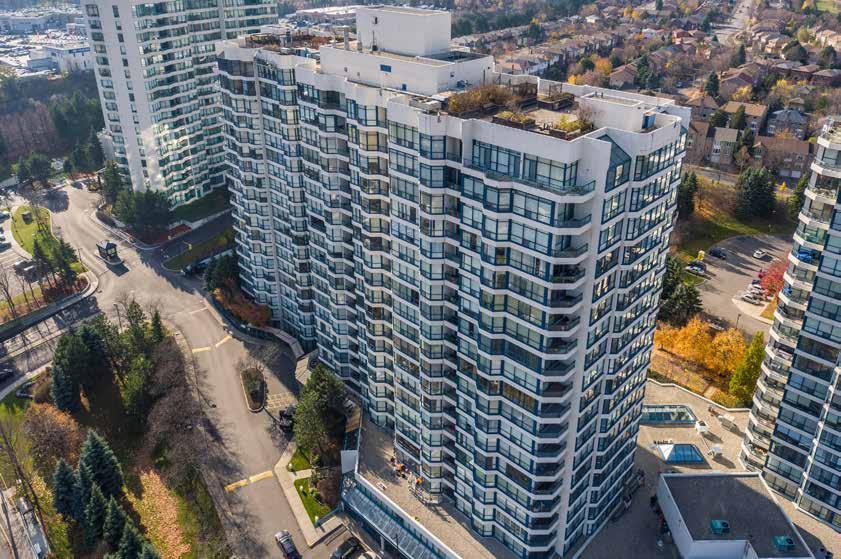


Whether we realize it or not, design has a direct impact on our outlook and overall health. Every surface and every object we're surrounded by can impact us — and, therefore, must serve a purpose. With the pandemic forever changing how we interact with our residential spaces, leveraging design as a tool to bring true value to a personal moment, an experience, a project, or a community in a meaningful way has become more important than ever.
BY STANLEY SUNAfter a prolonged period of isolation, urban residents seek ways to improve their mental wellbeing and build meaningful and inspiring
human connections. As a result, it is no surprise that developers and interior design firms are seeing an increased interest from modern city dwellers in condominium and rental developments that promote and support a sense of community, foster social interaction and togetherness, add value and enrich the lives of those who live there.
From upgraded co-working space amenities that respond to the needs of condo dwellers to interculturally inclusive spaces, Mason Studio’s design team shares top ideas — as well as what’s on its way — in the design of common areas in multi-unit residential buildings.
In a condo, the units can be quite modest for entertaining, and space is at a premium. As the “key holders” to a space, designers have the opportunity to create amenities that would serve as an extension of home and encourage people to feel as though they could walk out of their unit, come down and still feel comfortable.
In the last couple years, the interior design space has witnessed a shift where lobbies were no longer valued as they were seen as unused spaces. Residents want more opportunities to get to know their neighbours, and with that, the developments are starting


to explore different ways of how these spaces could be revived and reactivated.
One such example is the integration of more casual programs into the lobbies and an attempt to turn them into social hubs. The idea has become widespread as condo buildings are revving up their lobbies with community events or adding bar and service counters to create a sense of hospitality and allow tenants or residents to use these features as an amenity for themselves, to host special events or larger family gatherings.
Going forward, the idea towards more classic and traditional areas for gathering is expected to draw popularity and gain traction, thanks to how effortlessly it sets the scene to create connections and encourages residents to meet one another and socialize.
The concept of a co-working space added within the condo program is not new, and over the past few years, Toronto has seen a surge in the amenities of this type. These spaces feature a variety of open tables, private desks, specialized rooms for meetings and conferences, and lounge areas, and have become increasingly popular among remoteworking residents.
However, as more buildings with shared working spaces appear on the market
each day, a new trend has emerged. For those in need of designated spaces-tocreate or places for handiwork, developers are introducing ‘upgraded’ working spaces for various types of activities — noisy and messy ones included. Similar to hobby rooms, these workspaces house functional workstations, provide a much-needed storage space (when it is possible), and are attached to traditional shared workspaces to maintain a work environment within the space.
Additionally, a modern workspace in a multifamily building should be adaptable and has to take into account different working styles and preferences. And so as might be expected, interest is soaring in mini spaces or private nooks — carved out of unused spaces in a building — for work that would offer some privacy and accommodate all residents who are either temporarily or permanently working from home.
Bringing inclusivity to the forefront
Fostering an environment in which any resident is welcomed, respected, supported and valued as a fully participating member
is one of the main goals of a project. And in today’s globalized world where communities are made up of people from diverse cultures and multiple ethnic backgrounds, common spaces should be thoughtfully designed to reflect a blend of different ideas and norms.
By incorporating culturally specific spaces like a multi-faith room for residents to practice their traditions and spiritual practices, a residence is sure to deliver a sense of place that feels familiar and welcoming, and encourage both social connection and individual expression.

Artwork is also an essential element that helps reinforce a sense of place throughout the building. Instead of art as a passive aspect of decoration, the art program within a larger development should be reflective of the exceptional talent of artists in the community. The building, therefore, will become a gallery and an extension of the neighbourhood, showcasing the talented artists who live and work in the area and, importantly, will be reflective of the issues they care about.
Prioritizing well-being is (and will remain) key According to a recent report from the American Society of Interior Designers, homeowners are increasingly searching for designs that promote and support good health. And with well-being top of mind for the world, there’s no denying that wellnessoriented spaces in multi-family residential settings will be prioritized during the design and build process.
Lighting is an integral element in the interior architecture, which can highlight the interior finishes and support the function of the space. Common spaces with an abundance of natural light are the new norm — and that’s not likely to change any time soon. Not only does natural light have an incredible impact on mental health by increasing energy levels, but it also helps create a place that is aesthetically pleasing. By thoughtfully incorporating and placing windows throughout the shared spaces, this connection with nature and the outside world can be easily facilitated. 1
Stanley Sun is the Co-Founder and Creative Director of Mason Studio.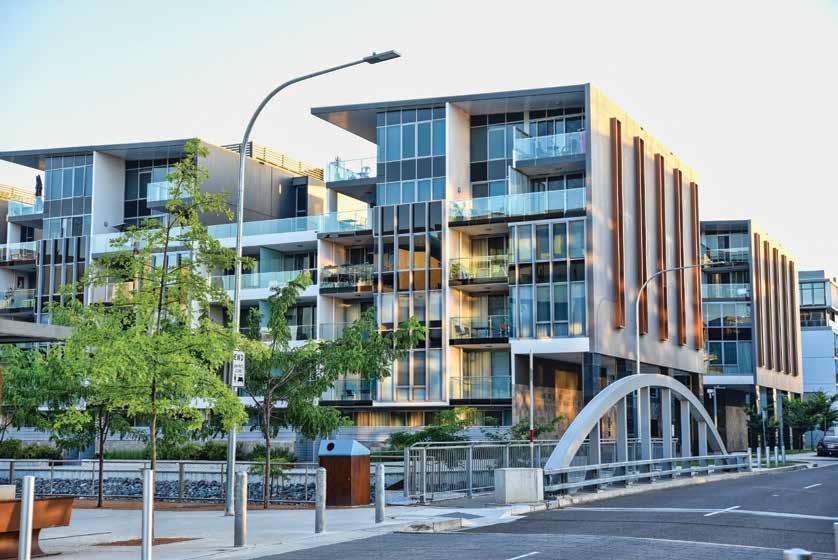
In today’s condo market, inflation and its impact on condo fees is a hot topic. As we come to the end of the COVID-19 pandemic, condos are facing new economic pressures. With consumer inflation impacting costs today, and construction inflation impacting both short-term and long-term capital project costs, many condos are asking: what are some measures for overcoming budgeting challenges and dealing with unexpected costs and deficits?
 BY LYNDSEY MCNALLY, OLCM, LCCI
BY LYNDSEY MCNALLY, OLCM, LCCI

There are many factors that determine the right level of condo fees for a condominium corporation. The expenses are unique to each building, depending on what is included in the corporation’s operations. But all condominiums in Ontario have one thing in common — their only major source of revenue is contributions made by owners through their monthly fees. Because funds come from individual owners, it is always difficult to communicate a large increase in condo fees as this places financial strain on community members.


In building a better budget there are a few major points of consideration:
• While it is of course important to ensure that small expenses are not being spent frivolously, place the most focus on the areas of the budget that have the largest impact on the monthly fees. This can help lead to meaningful discussions about how
the largest costs can be better managed, lowering overall operating costs.

• Do not overlook the overall financial position of the corporation. Ensuring that any budget supports a healthy surplus puts a condominium corporation in a better position to handle unexpected costs. A good guideline is to ensure 1 to 2 months of projected expenses in surplus at any given time, but this can and should be adjusted

to reflect the needs of the individual corporation. Consider insurance premiums, deductibles, history of receivables, and any other unique financial issue.
• Special assessments and sharp increases in fees are not the only options. Especially
by considering all options can a volunteer board member communicate to owners that they made every effort to budget in the best interests of all owners.

• Deferral of major projects is not helpful in reducing condo fees. Major components still need to be repaired or replaced at some point, and pushing projects further into the future compromises the value of the property and subjects the corporation to inflationary pressures (the work gets more expensive every year). Construction inflation historically, and today, is very high. The cost of borrowing may be less than the cost of inflation and borrowing funds to complete an important capital repair project, instead of deferring it, helps to protect values.
• Remember that it’s not realistic to never increase condo fees. Keeping fees affordable and in line with comparable real estate is important but keeping fees artificially low only hurts in the long run. The sooner you start recovering from a shortfall the easier it is long-term.
At Premier Elevator, our in-house design and engineering team works closely with our committed sales consultants to consistently provide the highest level of customer service and support while focusing on quality. Our fully equipped wood shop, metal fabrication department and finishing studio alongside our mirror and glass division creates the most efficient work environment enabling us to pass the savings on to our customers.
At Premier Elevator, our in-house design and engineering team works closely with our committed sales consultants to consistently provide the highest level of customer service and support while focusing on quality. Our fully equipped wood shop, metal fabrication department and finishing studio alongside our mirror and glass division creates the most efficient work environment enabling us to pass the savings on to our customers.

At Premier Elevator , our in-house design and engineering team works closely with our committed sales consultants to consistently provide the highest level of customer service and support while focusing on quality. Our fully equipped wood shop, metal fabrication department and finishing studio alongside our mirror and glass division creates the most efficient work environment enabling us to pass the savings on to our customers.
Visit www.premierelevator.com for inspiring ideas just for you.
Visit www.premierelevator.com for inspiring ideas just for you.
Visit www.premierelevator.com for inspiring ideas just for you.
Ultimately, a budget is a plan that is intended to support the projected costs for the upcoming year. It’s an exercise in reasonability, ensuring that the corporation has enough cash flow to meet its obligations under the Condominium Act and its own declaration and bylaws. If there is concern that a condominium corporation has a shortfall, or needs more funding, being realistic is most important. Condominium boards and the property managers supporting them should explore their options and look for real solutions to help keep fees at reasonable levels.
Often, the best ways to minimize increases are to look objectively at large contract expenses, utility retrofits, and also to develop better plans for long-term capital repair funding. There are experts who can help to guide the process, helping anyone responsible for the preparation of a budget to be confident in their due diligence process and the reasonability of their budget. 1
Lyndsey McNally is President of the Toronto & Area Chapter of the Canadian Condominium Institute and Director of Condominium Finance at CWB Maximum Financial where she works exclusively with condominium corporations, property managers and other condominium stakeholders to develop and implement customized financing solutions. She is also a licensed condominium manager.
“Keeping fees affordable and in line with comparable real estate is important but keeping fees artificially low only hurts in the long run.”
The results are in! 94%
of condo residents agree updating their flooring condo rule to RHINO Sound Control ® has protected and enhanced their property value
Before approving an acoustic underlay, it would be wise to get a copy of the products acoustic test report which should include a description of the entire floor and ceiling assembly. Double check it matches your buildings construction type. For starters, was it tested with or without a suspended ceiling?
Because floor underlayment companies wish to advertise the highest IIC acoustic rating for their product, it's not uncommon to add a suspended ceiling with sound batt insulation and up to 2-layers of drywall to reduce sound transmission and increase the test score. Keep in mind these types of ceilings are not typical of most high-rise condos in Canada.
It's not easy, but with change comes progress.
RHINO Sound Control ® achieved a test score of FIIC 70 when field tested over an 8" concrete floor and ceiling assembly with NO added suspended ceiling.

RHINO Sound Control ® exceeds the recommended Building Code of IIC 55.
Scan your fully editable Flooring Condo Rule and Renovation Agreement completed by a condo law professional.


rhino@thefloorstudio.ca

can be challenging at the best of times, and even more so with external factors such as inflation, labour shortages, and supply chain issues.
But what happens when you are a portfolio manager overseeing multiple corporations that each have monthly board meetings, budgets, annual life safety systems inspections, etc.?
Add to that, annual general meetings, where the date can vary depending on a
condo’s fiscal year end. Efficient organizational skills, while necessary for all managers, are even more crucial for portfolio managers because each corporation has different requirements depending on its construction, services and demographics. Not every corporation has a concierge.
BY YASMEEN NURMOHAMEDHere are a few tips to help manage condo portfolios more successfully.
Implement an annual plan for each cor poration whether on paper or digital, to help keep track of what exactly needs to be completed on time, including obtaining quotations for board approval and scheduling

the work. There are many legislative require ments, such as the annual life safety system inspection, where failure to comply can result in fines and/or prison. A plan should also include maintenance best practices. Delaying projects like opening the outdoor swimming pool could result in angry residents. Regular maintenance is important to improve service life and per formance, reduce frequency of breakdowns and reduce repair costs. The annual plan is unique to the corporation as the requirements will depend on the construction, services and amenities.
Use time efficiently to fulfill con tractual obligations. The number of on-site hours or visits for each condo cor poration will depend on the management agreement that was negotiated between the corporation and management service provider.

A manager can be barraged with emails. Responding to every ding like a Pavlovian dog
is not productive. In the outgoing voicemail message or automatic email response, communicate a daily dedicated time slot for responding to calls or emails to better manage the expectations of boards, residents, service providers, and staff. For example, everyone would know that the manager checks and responds to messages and emails daily, Monday to Friday between 9 a.m. and 12 p.m.
If the corporation does not have a resi dent portal, obtain proposals, arrange for a demo, leverage technology and encour age boards to invest in one as it saves money on printing costs (also good for the environ ment) and time delivering the notices. Through the portal, which is also accessible via an app, online amenity bookings can free up a man ager’s time and permit residents to book at their leisure while not being relegated to the manager’s hours. Critical condo information, including forms and core records can be posted for residents to access whenever they desire.
Foster a healthy team culture among building staff. Train and empower everyone, from the cleaners and concierge to the superintendent. The goal is to make everyone feel valued, and this leads to higher performance and retention. Partner with qualified and reputable service providers. It takes collective effort to manage condo corporations successfully.
These tips, while not an exhaustive list, are helpful for all condo managers and will lead to more time for focused work and better service for residents. 1
Yasmeen Nurmohamed, RCM, CMCA, AMS, is President of Royale Grande Property Management Ltd.
Thank you to Slavica Milicevic of Royale Grande Property Management Ltd. and Jenna Lawson from Melbourne Property Management Inc. for insight on their tips.















In 2016, I wrote an article for a wellknown property management company on what I believed the future held for the building restoration industry and its clients. It was my "best guess" after a 40year career, and now, after the last six years, my concerns have only multiplied.
Six years ago, the future issues I predicted were on-site labour shortages, a major shift in overhead costs, and a trend of contractors not understanding the financial risks associated with the restoration Industry. All these issues have added dimensions in 2022, and they have all been amplified by the pandemic, surging inflation, fast-rising interest rates, and supply chain issues causing delays and unprecedented price hikes in all sectors.
Back then, I also thought uneducated contractors would still be prevalent. Now, I am happy to report that most contractors now understand that the restoration industry is not for the "financial faint of heart." However, for owners, property managers and condominium corporations, the days of getting a "cheap" price due to a financially uneducated contractor are over. During the pandemic, all companies focused on survival and were forced to be more attentive to finances. Due to the tightening of bonding and insurance requirements, banking facilities, and the rising complexity of the safety, labour, and tax laws, those companies had no choice but to get with the program as these issues have very real costs and have to be addressed in their pricing.
In 2016, it was also easy to predict that there would be a labour shortage. At the time, I thought the labour shortage in the future would be for "on-site" skilled labour, but now we’re seeing increased demand for employees needed off-site or in the office. Project management, accounting, estimating, HR, and all administration positions have competition like never before. In the past, employees could double up on responsibilities to run a company. Now, the expertise needed in each position makes it near impossible for these responsibilities to be completed by one person. As companies have more inoffice employees, and are paying more for






those employees due to competition, the cost of overhead surges.



This, again, adds to the overall costs of all projects.


















Of course, finding on-site skilled labour in construction is still an issue today. That said, it is exacerbated in the restoration industry by the fact that many people may be skilled workers, but asking them to apply their skills on a swing stage 300 feet in the air is a non-starter for them. As a side note: 99 of 100 people who respond to a help wanted ad say "no" once they find out they will be working on the side of a building.











After 46 years (not 40) in the restoration ndustry, I'll give those predictions another shot!
For one, as we advance, I believe many people do not yet understand the speed and extent that costs are increasing and how it will affect contractors, owners, property managers and their clients. As front-end buyers, the restoration industry has seen increases in labour, materials, and supplies that are unprecedented. We have also seen what the result of competition has done to the labour pool, and why the supply chain issues are so costly. As a contractor, we have to adjust quickly to this reality and, at the same time, try to predict what all of this means to our future.

No doubt, economic headwinds will continue to impact the industry. The condominium sector may be the area that needs the most focus, specifically at the Board of Directors level. Although keeping costs under control should be top of mind for everyone, there is a big difference between controlling everyday costs and reducing funding in a reserve fund to control costs. Controlling the daily, monthly, and yearly costs of a building is important and always top of the list since we see them constantly. Yet, in the past 20 years, with inflation at 2% or less and low-interest rates, reserve funds could be set up quite easily for future costs.
This isn't the case anymore. Inflation isn't around 2%; it's 8% or more. And borrowing rates aren't 2%; they’re triple. There are dramatic price increases for "out of sight, out of mind" services that are not seen by most people in the general public. Since mid2021, we have witnessed supplier price increases of 8, 10, 30, and 50% overnight.
My concern is not a guess. Some reserve fund studies I've seen recently are based on 2% or 3% increases. While this would suffice in the past, any corporation with a reserve based on these numbers or had their studies completed before 2022 should have those studies updated to present conditions. Moreover, their board should scrutinize the results thoroughly for their corporation's long-term financial health.
As in 2016, my prediction is that many will ignore my advice and many will be fine. Even still, how much will it cost to take a good look? I predict - no, guarantee - the cost of being sure will be far less than being blindsided.
 Scott Byberg is President of Dominion Caulking and Langstaff Restorations., where he has watched the industry evolve since joining it nearly 50 years ago. He and his team look forward to celebrating Dominion Caulking’s 100th anniversary in 2028.
Scott Byberg is President of Dominion Caulking and Langstaff Restorations., where he has watched the industry evolve since joining it nearly 50 years ago. He and his team look forward to celebrating Dominion Caulking’s 100th anniversary in 2028.


It’s been five years since the Condominium Management Regulatory Authority of Ontario (CMRAO) debuted in Ontario’s multi-residential scene. In the short time since, the organization has reached significant milestones along its mission to “enhance consumer protection through modern and effective regulation of the condominium management sector.”
For CMRAO Chair Aubrey LeBlanc and his team, one of the most significant milestones to date was simply getting started on a solid foundation.
“Before we opened our doors, we spent a long period of time building the organization in principal so we could head straight towards our vision of being a modern regulator right from the launch pad,” he reflects.
“That pre-planning phase was vital,” he continues, “Our aim from the get-go was not to arrive as a cop for practitioners, but instead to use natural tools to ensure compliance within the licensed community and, by doing so, provide better performance in the consumer marketplace by the regulated individuals and companies. I think we succeeded at that.”


The CMRAO has enjoyed consistent growth since it began operations. At last count, the organization surpassed its forecasted number of licensed individuals and companies, and feedback from several surveys has revealed a positive reception across its stakeholder groups.

Maintaining stakeholder support has required the CMRAO to closely monitor the industry and adapt its approach accordingly. For example, the organization lowered its fees based on market feedback and explored internal improvements based on input from the provincial auditor.
“It’s been a balancing act,” says LeBlanc, “but that comes with the territory: DAAs (delegated administrative authorities) have to walk a very fine line when navigating public-private duality, and that’s something we consider every day.”
“As a best practice for modern regulators,” he continues, “the CMRAO focused its first five years on finding ways to work with the individuals or companies that were underperforming to make the industry better: We didn’t want to come in as a

hard-nosed enforcement organization because that can bring a lot of unintended consequences and scare people away from the profession.”
Now that the industry has had five years to understand the work the CMRAO is here to do, the organization is moving into a phase of stronger reinforcement. The intent is to bring licensed managers and companies in line with standards and practices that will ensure better protection

“We’ve taken responsibility for specifying the educational requirements, and we’ve done so with a full eye to the past because a lot of that material and scope was great,” says LeBlanc.
The CMRAO’s approach to industry training has also adapted to market needs. On November 15, the organization rolled out a new continuing professional education framework that enhances the CMRAO’s new education program and takes a deeper dive into the over 70 core competencies required for success in the field across various skillsets (e.g., technical, financial, management, soft skills, etc.).
“We’ve built on the great training foundation that was there to make it more modern, comprehensive, and understandable to industry professionals and the people they work with,” LeBlanc explains.

practitioners were,” recalls LeBlanc. “At the same time, we were building public awareness around consumer protections and letting consumers know that we are here to take complaints and address their issues.”
Five years later, the CMRAO is at a point where it feels confident that its presence is felt in the industry as its visibility is at a level where licensees and consumers alike are the ones reaching out to the organization first.
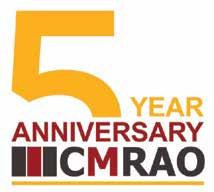
That’s not to say the team is dialing back on its outreach. Moving forward, the CMRAO plans to continue building out its presence through its established channels and relationships.
“Part of being a modern entity is taking advantage of modern communications,” adds LeBlanc. “We’re fortunate to have a young and diverse staff who get that and know how to get our name out.”
for condominium consumers. Here again, adds LeBlanc, “As a modern regulator, our philosophy is to use everything in our toolkit to address issues appropriately and in a balanced fashion. I believe we’ve been successful at doing that so far.”
Assuming responsibility for industry education is no small undertaking. To serve this role effectively, the CMRAO has drawn on the training and upskilling strategies employed by the industry associations that came before it.
The CMRAO has also partnered with Humber College to deliver its education program in a further bid to enhance accessibility and attract more professionals to the field.
Industry visibility is key to the CMRAO’s efficacy as a regulatory body. To that end, the team continues to wield public awareness campaigns, a strong social media presence, and outreach initiatives to reach industry professionals and consumers alike.
“For the first few years, we were working on being visible to all the stakeholders and finding out who the
Seismic changes are coming to the multi-residential sector, but the CMRAO is prepared to respond. And with everything from economic disruptions, labour shortages, demographic shifts, affordable housing demands, and public policy shifts in its path, the regulator is bracing for busier years ahead.
“There’s a perfect storm brewing in the world of residential real estate, and it’s going to be stressful and emotional for everyone,” he adds. “Our job, as always, will be to stay on top of what’s going on in the industry and calibrate our strategy to new realities.”
As a modern regulator, our philosophy is to use everything in our toolkit to address issues appropriately and in a balanced fashion. I believe we’ve been successful at doing that so far.
Aubrey LeBlanc, Chair of the CMRAO Board of Directors
Acting on behalf of condos at the CAT and other considerations
in Ontario. On that day, the Condominium Management Services Act, 2015 came into effect, as did significant amendments to the Condominium Act, 1998 brought in through the Protecting Con dominium Owners Act, 2015. While not all of these changes were directed exclusively at property managers, many were, and almost all the changes that were not strictly for managers would still have a huge impact on them and their work.
Working in property management can be rewarding, but it can also be stressful, and emotionally and physically draining. This was the case before the CMSA and the Condo Act amendments came into play, and it has increased exponentially, as a result of those changes as well as the COVID-19 pandemic.
Overall, these changes are positive for the industry, but the effect they have had
on condo managers and management companies cannot be ignored.
Management Services Act
Prior to the CMSA, there were courses that property managers could take to learn about condo management, and certifications (such as RCM) that they could obtain to show
their experience in the field, but there was no requirement for managers to take those courses or get those certifications.
Overall, the requirement for licensing is a good thing, as it provides condo corporations and their boards with the confidence that their property manager has a good, base level of understanding condos and their operations.
However, this requirement has added

work and costs for property managers and management companies.
For any level of license — whether limited, transitional (now expired), or general — the Excellence in Condominium Management course is mandatory. In order to obtain a general license, a manager must take an additional five courses: Law, Relationship Building, Building Operations and Maintenance, Financials, and Operational Quality. Once issued, the licenses must be renewed annually.
In addition to the educational requirements, there are significant fees involved: a onetime application fee of $150, a fee of $150 for the Excellence in Condominium Management course, and annual fees of $567 for individual licenses or $799 + $327 per employed licensee for management companies. Errors and omissions and fidelity insurance are also both required. These costs are not insignificant, and can be difficult for management companies to pass on to their customers when condo boards are already dealing with strained budgets, particularly in this post-pandemic economy.
The first amendments to the Condo Act that came into play involved the filing and preparation of certain documents on behalf of condominiums, and the payment of fees to the Condominium Authority of Ontario (CAO). Condominiums are now required to file an initial return, a return upon turn-over of a new condo, an annual return, and/or a transitional return, as applicable.
Condos must also send information certificates to owners: the periodic information certificate, sent out twice per year; the information certificate update, sent out within 30 days of certain key changes regarding the condo; and the new owner information certificate, sent to new owners when the condo is provided notice of the change of ownership. New, stricter requirements were put in place regarding notice of owners’ meetings and retention of records.
Each of these changes meant additional work for property managers, who were left to deal with the forms and filings. Management contracts that had been previously entered into did not involve these services, so management companies began to have to choose between doing the work without additional payment or trying to negotiate new or amended management agreements. New agreements being entered into included, quite understandably, increased management fees.


Get recognized with skills that are in demand in Condominium Management. Register now for this part-time program that includes management, law, relationship building, physical building management, financials and operational quality knowledge and skills. Learn from experienced facilitators who are industry experts.
Register now humber.ca/cpl/cmrao
And if the additional stress of all of those changes was not enough, there was the Condominium Authority Tribunal (CAT). First hearing only records disputes, then disputes regarding people, pets, and parking (and storage). As of January 1st, 2022, the CAT started hearing matters dealing with nuisances, annoyances, or disruptions. This means that now, the vast majority of disputes over day-today operational issues fall under the jurisdiction of the CAT.
Unlike other tribunals and courts, a licensed legal representative is not required at the CAT; in fact, a licensed condominium manager is one of the specific categories of people who are permitted to represent condo corporations at the CAT. As a result, since the CAT’s beginning, many condos have expected their property managers to represent them in CAT matters, and many managers have done so.

There are many problems with having property managers act as a condo’s legal representative in a CAT application. Property managers, generally speaking, do not have legal training or the necessary knowledge
and experience to draft legal pleadings and arguments, present evidence, cross-examine witnesses, and other steps that may be involved in a CAT application. This can put condos at a disadvantage if they are not putting their ‘best foot forward’, so to speak.
Second, CAT applications can be incredibly time-consuming. This can cause immense difficulties for managers who are trying to carry out their day-to-day duties, which can lead to boards and owners being frustrated if they feel that other issues are not being addressed in a timely manner.
Third, because of the time involved, this can also create problems with respect to management fees. As with the additional filing and information requirements discussed above, management companies are being forced to choose between having their managers provide those services, if the management contracts do not expressly address it, or negotiating new or amended agreements. And condo boards are rarely happy about entering into new or amended agreements when those agreements contain significant management cost increases.
As with so many industries in the current economy, there is a significant shortage of property managers. Many have left the industry — whether by choice or otherwise — when the licensing requirements came in, as the additional time and effort involved was more than they wanted to take on. Others have since left because of stress and burnout, thanks to all of the additional work that is now part of a manager’s duties, as well as the effects of the pandemic.
This shortage leads to additional strain on the remaining managers who are required to take on more portfolios or leave clients behind. Property managers are, at their core, people who help. Leaving clients behind or doing a job that is not their best is not where any manager wants to be.
Having property managers act as condo representatives at the CAT puts a particularly large and unnecessary burden on the industry as a whole. Rather than losing managers due to the strain that all these changes have caused, there needs to be greater support for retaining this talent and attracting new managers to the field. 1
Laura Gurr is a partner with Cohen Highley LLP and is part of the multi-residential housing group. Her practice focuses on condominium law, acting for condominium corporations, property managers, and developers in a broad range of litigation, operational and governance matters. Laura is actively involved in the condominium and multi-residential housing industry. She regularly writes and speaks about legal issues affecting the industry. Since 2014, Laura has been a board member of the Canadian Condominium Institute (London Chapter) and the board of directors for Homes Unlimited (London) Inc.
Stephanie Sutherland has spent her legal career working with condominium corporations, property managers and unit owners, assisting them with day-to-day condominium governance matters. An active member of the condominium community in Ontario, Stephanie is involved in the Canadian Condominium Institute (CCI) Golden Horseshoe, Grand River, and London chapters, and sits on various CCI committees as well as the Grand River Board. She is a frequent speaker at CCI conferences, courses, and seminars and contributes articles to condominium publications.


How new workplace solutions could help ease the shortage of property managers.
 By Rebecca Melnyk
By Rebecca Melnyk

The pandemic has prompted a widespread reevaluation of the workplace across industries, but some members of Ontario’s condo sector have long foreseen shifts that are necessary to improve a property manager’s working conditions and ease a labour shortage problem that’s expected to hit a crisis level.
There are now fewer experienced managers for boards to choose from. Ontario currently houses 12,120 condo corporations and, according to the most recent data from the CMRAO, 3,858 licensed managers, of which 2,417 are general licensees.
Stacey Kurck, Vice President of Client Engagement and Business Development at FirstService Residential, says flexible staffing models could be one way to attract and retain skilled talent, while relieving some financial pressure that boards are experiencing amid rising costs.
“Most buildings in the GTA request a fulltime experienced manager in the site office,” she says. “By changing the staffing structure at buildings, in this labour shortage market, we can create staffing models that align with the budget of the building and yet still maintain good quality managers.”
The Canadian workplace is undergoing a mindset shift, where being on-site Monday to Friday, nine-to-five, isn't necessarily making workers more productive. As Kurck explains, for condo managers, while much depends upon the community (perhaps it’s a brand-new high-rise that requires a lot of directional guidance) and what sorts of issues pop up (“if you have a flood in the building that changes everything; it’s all hands on deck”), there’s not much of a difference between being on-site versus managing the asset from home or a head office.
Flexibility could also trickle down to cost savings, specifically when considering the addition of on-site support staff.
“If the board agrees to reduce the needed site hours of the general licensed property manager because their management company is able to manage most of the administrative tasks from their operations support centre, this would provide a reduction in need of an onsite property manager and, therefore, reduce the budget
for management somewhat,” explains Kurck “Additionally, for the communities that still want the presence of someone onsite, having a limited licenced property manager and/or a qualified condo administrator can fulfill those needed site hours.”
She advises that condos with more than 350 units could support a full-time property manager and administrator. Condos with more than 800 units could have three staff onsite such as a property manager, assistant property manager and administrator.
“To have one property manager assigned to the community full-time is considered a luxury customer service model, compared to other markets such as British Columbia.”
Strata managers, as they are called in British Columbia, are not sited, but rather handle portfolios from a head office. One manager oversees multiple buildings from afar, and this has always been the case since the industry started up. There is heavy reliance on trades, where vendors and other site staff keep them abreast of the daily happenings within the multi-residential buildings.
Sean Ingraham, Senior Vice President of FirstService Residential BC, says within his company there are seven to eight buildings per strata manager, compared to the industry average of 12 to 16. Up until the pandemic, the 102 licensees were traveling to their downtown Vancouver office every day to care for their buildings.
When COVID hit, the B.C. branch had a strong IT background and was able to send employees home to work with little interruption. “We’re seeing greater flexibility on our end with what strata managers do,” he says. “If they have an AGM and don’t get home till midnight, we’re flexible on their start time.”
Vancouver is also one of the most expensive places to live in Canada. Some of Ingraham’s team members live far out in the suburbs and were commuting almost one-and-half hours each way. Now, some are able to travel to the office one day a week and work the other four days at home.
“Productivity for us is actually better because they don’t have to commute,” says
Ingraham. “It's also better for our managers because with the shift to technology and being able to work remotely, they’re able to work from site.”
In that respect, customer service has also improved. Managers are able to spend time at the condo, to “get the scope” of various projects while working from an amenity room via Wi-Fi.
“It’s been really interesting to see that shift, where now our managers can be more fluid and move around buildings and their home and still continue to do work,” says Ingraham, noting “a large part of the job is administrative.”
Companies with fluid staffing models have an easier time recruiting talent, says Ingraham. “Some of our competitors are going back to old school— ‘got to be in the office at 8:30 every day’—and I know we’re winning talent from those that are inflexible.”
His company recently hired a strata manager to facilitate onboarding teams. Although she lives four hours from the office, they were able to hire the “class-A talent” by being flexible.
“We have four-and-a-half day work weeks here in Ontario for FirstService,” adds Kurck. “Essentially, we know managers manage more than eight hours a day. . . I’d say 90 per cent of boards have no problem with it and believe it's the right thing to do.”
“It’s also about retaining top talent—the ones we are training to keep here,” she says. For instance, a senior manager at the company who works at a 1000-plus unit high-rise in downtown Toronto recently moved over an hour away.
“The board didn’t want to lose her and said they’d be flexible. She committed to twice a week on site,” says Kurck. “Because of her senior position, she trained the on-site staff. . . they have their daily meetings over Zoom. At the end of the day, we’d find her another home if that board was not going to be flexible.”
In B.C., a group of associations started waving red flags to the BC Financial Services Authority (BCFSA). “We are warning the government and regulator that there is a danger to the public coming
because so many managers are in the older demographic,” says Ingraham.
New data from the BCFSA reveals that 36 per cent of managers in B.C. are Boomers, between 56 and 75 years old.
“It’s rare in our industry that someone works at 65,” he says. “It’s going to be a crisis soon if they start retiring in the next four to five years because there are not nearly enough people coming into the industry to replace them. There are lots of new stratas being built, and legislation, compliance and legal are getting more and more challenging.”
The same issues apply to Ontario, except Boomers already started retiring early in 2017 when CMRAO licensing rolled out. “We already had approximately 25 per cent attrition, and the GTA region is seeing over 50 new condos register per year,” says Kurck.
“We’re typically not an industry that a person starts their career in,” she adds. “You are dealing with a variety of people and personality types on any given day and in order to do that successfully you need to learn that skill over time through a variety of career and life experience.”
In B.C., there are few companies with dedicated people who train new hires on how to manage a building. “In most cases, like when I started, you’re thrown the keys on day two and you’ve got to learn,” says Ingraham. “So, attrition in the industry is super high. All these people are in sink or swim and most of them sink.”
FirstService BC kickstarted a training program that has been running for five years. Out of its 102 strata managers, 27 per cent went through the program. They had been newly licensed and trained to be portfolio managers over six months. “It’s a big financial investment, deep into the six figures every year for us, but it's better because we’re getting great candidates. Out of all the managers who trained—we only lost two.”
There is also a shift to more of a ‘support network around managers’, for instance, specialists with technical know-how who help managers to handle portfolios. “The expectation of the client is that sometimes the manager knows everything—from HR
and working with the on-site associates to being a roofing expert. “It’s nice to see the industry shift where there is support around that manager so they don’t have to be the expert in everything, and I think we’re going to continue to see that trend,” says Ingraham.
In the shift to progressive staffing models in Ontario, management companies could offer flexible solutions like back-end operational teams or administrators. Kurck acknowledges this extra support is typically seen with larger management firms who can roll out policies with flexible workplace models.
If a company has a 24-7-365 customer care department to address common questions, she says a condo could migrate 50 per cent of a property manager’s dayto-day administrative duties. This would allow for more focus on the property, meeting with specialists and working on the budget. “The overall expenses can be reduced by a variety of ways, such as using AvidXchange and having a verified vendor program like VIVE.”
Board members also figure highly into the paradigm shift, as newer members might have less antiquated ideas of what a manager’s workplace should look like.
“If you’ve never been a board member, you have a fresh perspective,” says Kurck. “There are a lot more people living in condos than ever before who are new to community living, but they’re professionals for the most part. Maybe they’re an accountant by day and join the board because they want to take control of their assets. When they’re learning that, they can learn by saying what is needed.”
For starters, must the friendly face downstairs be a general licensed manager since there are only 2000 to go around? Or, can boards be open to new faces who are being trained, eager to learn and backed with resources?
“Boards are always looking to save money, although it’s not always possible if you want quality management. Let’s continue to ensure managers are employed and paid appropriately, while also providing a more flexible work environment, benefits that matter, and a work environment that is harassment free.” 1
Sustainable design is the art of advancing a building’s positive environmental qualities while reducing or (eliminating) its negative impacts. It is driven by six core principles:
Resilient design: Sustainable buildings should be made and operated to thrive in their respective environments and stand up to climate change risks.
Optimal energy use: A sustainable building envelope should rely on energy efficiency and passive design measures whenever possible to meet or exceed applicable energy performance standards.
Enhanced indoor environmental quality: Building systems and components should work together to provide safe, healthy, and comfortable spaces.
Sustainable materials: Sustainable building envelopes should be constructed of materials that optimize service life and minimize life-cycle environmental impacts.
Optimal performance practices: Best practices in building operations and maintenance (e.g., preventative maintenance, HVAC optimization) can help building envelopes operate at their peak over a building’s lifetime.
Retrofitting existing buildings: Typically, it’s more sustainable to renovate or retrofit an existing asset than to tear one down and construct a new one.
RJC Engineers collaborates with condo associations, developers, and property managers to envision and realize sustainable design solutions in projects across the country.
Learn more at www.rjc.ca










Sustainability remains high on the construction industry’s agenda, and for good reasons. Across the sector, there is an increasing awareness that contributing to a cleaner, greener, and more energy-efficient built environment yields long-term benefits for stakeholders and – more importantly – the planet at large.

“There’s plenty of motivation to make sustainability a priority in construction and the good news is that we see that priority being taken seriously by more and more of our clients,” says Jennifer Hogan with Pretium Engineering.
It’s an optimistic report, but now is no time for Canada’s designers, engineers, builders, and other trades professionals to rest on current accomplishments. Given Canada’s Net Zero ambitions, mounting environmental regulations, and a growing call for more eco-friendly built environments among public and private sector stakeholders, construction industry professionals must keep sustainability top of mind to stay competitive and address critical environmental objectives.
Of course, says Jennifer, the other piece of promising news is that there are proven ways to embed sustainability in any project: “For years, we’ve been involved in the design, construction, and benchmarking of multiple deep energy retrofit projects. That’s enabled us to see what sustainability strategies work and share them with our clients to ensure impactful, long-term outcomes.”
Some of the key strategies include: • Plan for the future: Long before the “shovels” break ground, it pays (both figuratively and financially) to bake holistic, future-proof retrofit plans into the initial design.
“Buyers’ remorse is real,” says Jennifer. “Nothing is worse than completing a retrofi t only to realize a few years later that you needed better performance or a different system to achieve your long-term goals.”
For this reason, it’s in the project stakeholders’ best interests to “begin with the end” by reviewing the entire building and all its systems to make sure the team’s energy and carbon goals are achieved once all the projects have been implemented.





For example, adds Jennifer, “If you are already completing cladding improvements at your building, the incremental cost to improve the system, with more insulation or better air tightness, is typically less than the cost to come back in a few years to do it as a separate project.”

• Be pragmatic: Achieving energy savings is important, but it does not make sense financially or environmentally to replace systems or components before they near the end of their useful service life. Existing materials and systems should be maintained to prevent premature failure, and when the time comes, high-carbon materials should be re-used or remain in place whenever possible.
Take, for example, a roofing system that includes an abundance of high-carbon materials like bitumen and insulation products. A well-maintained roof can last longer and can ensure that recovery is a viable option. Alternatively, it also opens the possibility of saving dry and intact insulation during roof replacements.




• Stay current on energy and carbon incentive programs: There are ample programs across Canada that provide funding and support for energy or carbonreduction technologies and projects. Over time, these programs can disappear, evolve, or be replaced by something new entirely. Therefore, there are benefits to staying on top of what energy and carbon programs are available, where they can be found, and how they can be accessed.
“We emphasize staying up to date with the changes so that we can identify opportunities to our clients where funding may be available for their projects,” says Jennifer. “As a result, we have a track record of success in completing projects and the required modelling and documentation to unlock these incentives for our clients.”
• Design with climate change in mind:
Predicting our future climate can be challenging, but we believe it is important to consider potential future loads when preparing our designs.

These strategies will contribute to more eco-forward (and fi nancially rewarding) builds. Enacting them successfully, however, requires collaboration. No one stakeholder can tackle sustainable design and construction alone. Real energy and carbon savings can only be planned and actionized when all relevant parties are united in their approach.

“Sharing knowledge across our various areas of expertise is an integral part of ‘Working Together, Better’ at Pretium,” says Jennifer. “What this means for our clients is that we strive to consider energy and carbon in each of our projects.”
Jennifer Hogan is a Project Principal and the leader of the Energy and Carbon Reduction team at Pretium Engineering Inc., a specialist building science, mechanical, and structural consulting engineering firm that provides high-quality, evidence-driven services. Contact a local office to see how “Working Together, Better” can work for you.
Labour and material shortages have put strain on the construction and maintenance industries, which have undoubtedly altered how any type of work can be managed. How do we labour through these challenges and maintain healthy working relationships with the contractors who are working extra harder with fewer staff, while facing higher costs?
The condo industry expectations must always be moderated to reflect reality, and Covid has effectively rewritten the book on what is currently reasonable. Construction and project planning, now more so than ever, must assign realistic expectations of scheduling and
 BY VAL KHOMENKO AND MICHAEL HENSEN
BY VAL KHOMENKO AND MICHAEL HENSEN
staging to meet contractor and material availability.
Communicate with the contractor ahead of time to determine reasonably possible deliverables and document it. Advise the board and other involved stakeholders of the proposed and reasonably possible times to deliver the project to its completion. If
It has been a disastrous year when it comes to completing projects and any type of construction within the condominium industry. Frustrations and anxiety are running at an all-time high. The first target for these unprecedented challenges is usually the contractor, who often bears the responsibility of providing qualified staff and ensuring deliverables of materials/repairs on time.
materials are available for a higher premium but shorter delivery time, present this option to the decision makers.
It is notably important to weigh the cost benefit analysis and assess the risks. If a project schedule is poorly planned, the strain that will be put on the owners, contractors, and all the employees involved in the project will often lead to poor results.

Due to the close quarters and enclosed workspaces they frequently share with their coworkers, contractors, resultantly, face significant mental stress. The stress level has increased because of worries about their health and what they might contract and spread whether it is Covid or other respiratory illnesses. Additionally, the anxiety concerning the increased costs, uncertainty of materials’ deliverables and staff retention have caused contractors much toil. Aging workforce and lower trades participation rates are also significant contributory factors. Listen to these concerns and plan accordingly. As a project manager or condominium manager, it is imperative to maintain that two-way communication.
By paying attention to the contractor, you will frequently make them feel valued, and they will be much more likely to inform you of any problems before they get worse. For the contractor, it is crucial to be forthcoming and upfront about the aforementioned challenges of staff members. It is irresponsible to assign blame solely on COVID or shortages and take advantage of the present times. Look for alternatives and if unsuccessful, communicate these outcomes to client.
More than ever, boards and management are looking to project management firms or engineering consultants for help in managing construction projects. These experts enforce the contractor's legal responsibilities, including ensuring that the work is finished and that it is managed to represent the status of the project.

Having a project manager or consultant also assists boards and management in adhering to various legislation when it comes to projects. Having a designated professional lead the project reduces the number of people the contractor has to report to on the progress and completion of the work. This creates checks and balances during the project. One
of the condo manager’s or project manager’s duties, if assigned, is to address schedule and workmanship issues through documented communications and progress/site meetings involving all the necessary parties.
Ensure that the regular and minuted meetings occur to report on the progress and document the intricacies of the project. Ensure that the copies of these reports are delivered promptly and accurately. Some of the challenges that the contractors face are incomplete details and information received from the client.
Ensure that you are providing them with all the necessary details involving the project and be available to answer any queries. Delays in communication can transcend into delays in providing solutions.
Remain not just available but also valuable
One of the key ingredients to maintaining healthy relationships with contactors is to maintain the collective approach that you are working with them. Include the contractor early in the design phase, think about a design-build strategy, and create a cooperative atmosphere with your suppliers and tradespeople.
For the contractor, ask questions to obtain as many details as possible. Offer advice and expertise with concrete examples and solutions and guide the client through the challenging times. Gaining a client's trust is easy when you walk them through the procedures and are transparent and honest about how adjustments will affect the cost and schedule for construction. Create long-term value in providing these turnkey solutions. 1
Val Khomenko is a Senior Condominium Manager with ICON Property Management Ltd. based in Toronto, Ontario, providing condominium management services in the Greater Toronto Area. Val can be reached at val@iconpm.ca
Michael Hensen is Vice President in the Central Region for IRC Buildings Sciences Group, A Rimkus Company. Mr. Hensen is a professional engineer a Registered Roof Consultant (IIBEC) and is the Practice Leader for building enclosure, roofing, waterproofing and technical leader for the company’s corporate sustainability engineering initiatives.








It’s a common scenario: a homebuyer purchases what appears to be a regular townhome only to be told it classifies as a “freehold condominium.” This can be a confusing descriptor, but it technically holds true. The term “freehold” is frequently used as a marketing strategy to suggest purchasers are getting more than they would ordinarily receive when buying a unit, such as a front or back yard. That being said, a more accurate term for these types of condominiums would be a “lot line” condominium where the owner’s unit includes not just the building but also a portion of the land surrounding it.

















Regardless of the marketing terms used to describe your condo unit, when you are setting up your personal insurance you should be most concerned if your condo is classified as a standard registration and what is indicated in your condominium’s unique standard unit description.



















It is important to note that the most common kind of condo registration in the province of Ontario is a standard registration. If a condominium is not described as a “Common Element Condominium” or a Vacant Land Condominium” within the registered name of your condominium, then it is highly likely it is a standard registration condo.








































Freehold or lot line condos carry unique maintenance obligations, and this is where confusion over insurance can set in. Specifically, freehold or lot line condo declarations often hold owners more responsible for the ongoing repair and maintenance of lot elements (e.g., roof, building envelope, driveway, trees, etc.).
Reading this, owners then might assume that they need insurance to cover any sudden or accidental damage that occurs on their lot, but that is often not the case. In truth, the Condominium Act of Ontario states that if a condominium is a “standard registration condominium,” then the condominium corporation is required to insure the common elements and the units, but not any improvements to the units. That includes the actual homes and any other common corporation property such as curbs, roadways, and light standards. Moreover, condominium corporations must insure a basic level of finishes within each home, as described by the condominium’s standard unit bylaw. As such, it is critical to pay attention to your corporation’s standard unit bylaw to understand what materials and finishes are considered part of a standard unit, and thus insured by the condo. Anything over and above those standard finishes and materials need to be


insured by the owner under a condo unit owner policy and are commonly referred to as betterments or improvements.




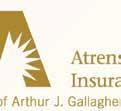
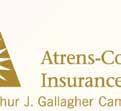
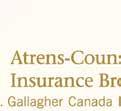
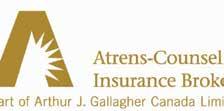
One question we get from owners of freehold or lot line condos is “What kind of insurance do I need?” The answer is that you should not be purchasing a standard home insurance policy, but rather a condominium unit owners’ insurance policy. This requires bringing a copy of your standard unit bylaw to your insurance broker and understanding what’s covered.
Overall, anything inside your unit that is not described in the standard unit bylaw is your responsibility to insure. As such, you should be sure to include the replacement value of any of those finishes or features (over and above what is listed in the bylaw) within your own betterments limit of insurance in your unit owners’ insurance policy.

To review, condominium unit owners are responsible for the following:












• Personal Property: such as furniture, clothing, appliances, electronics, any moveable property within the unit, all personal effects stored in lockers, etc.
• Improvements or Betterments: such as moldings, lighting, flooring, upgraded cabinetry, and anything over-and-above what is described in the standard unit bylaw.
• Additional Costs to Live Elsewhere: if your unit is so badly damaged that you cannot occupy it until repairs are complete.
• Personal Liability: condo owners are legally liable for any bodily injury or property damage arising out of their personal activities as a unit owner and from the ownership of your individual property.
• Charge Back of Corporation Deductible: unit owners may be responsible for the deductible under the Corporation’s Insurance Policy if the corporation has a bylaw that dictates this, or if the owner’s act or omission results in damage to any property the corporation is responsible for insuring.


• Loss Assessment Coverage: if there is a major property or liability event that results in a shortfall in your condominium corporation insurance, you may be personally assessed as a unit owner.



• Additional Unit Owner Protection: a unit owner policy should contain additional contingent protection to cover grey areas between the condo’s insurance and your own.
• Special Limits and Extensions of Coverage: there may be other special limits of coverage required for jewelry, bicycles, sewer backup, and other exposures that may exist. Your condo’s standard unit bylaw, like many others, may also indicate that the unit owner must insure all of their floor coverings. If this is the case, be sure to include the replacement cost of all floors above the sub-floor within your betterments limit of your own policy as well.
If you purchase a regular homeowners policy to insure your property in a standard registration condo, you are making a big mistake. Not only will you have double coverage for a lot of the property that your condo already insures, but you could also be paying up to four times what you would for a condo unit owner’s policy. Additionally, you will be missing key elements of coverage that you need, based on exposures you have as a condominium unit owner.








The insurance requirements for a condo unit owner can be complex depending on the unit owner’s needs and their specific condominium bylaws. That’s why we strongly recommend working with an insurance broker that understands the complexities of condominium insurance and can recommend the right protection for you.

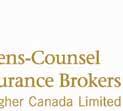
When we first think of condo living, images of Disney’s Snow White and the Seven Dwarfs come to mind. The birds are chirping, the landscaping looks great, the air smells fresh and everyone lives harmoniously under one roof. However, the reality of condo living sometimes turns into a scene from the 1980’s movie the “Burbs,” where communal living is not so ideal.
BY SONJA HODIS

Unfortunately, over the last couple of years, we have seen an increasing trend of unacceptable behaviour within condo communities, directed at property managers, directors, other owners/residents and even contractors. As a result, condo corporations are beginning to implement harassment rules and policies and seek legal advice on how to handle these difficult situations.
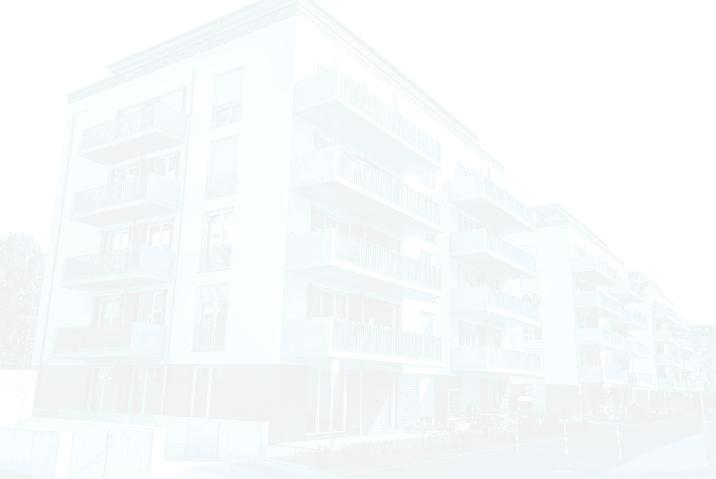
As condo communities are not only places where people live but also workplaces for many, even if the condo itself does not have employees, it is important to address this unacceptable behaviour from a variety of angles.

As a workplace, condo corporations have responsibilities under the Occupational Health and Safety Act (OHSA). Under OHSA, an “employer” is defined as someone who employs one or more workers or contracts for the services of one or more workers and includes a contractor or subcontractor who performs work or supplies services. The obligations of employers under the OHSA apply to condominiums as well, even if the condominium does not have any employees of its own.
Condos will fall under the definition of employer as they are someone who contracts for services. Condos are also considered


“Situations and people become more difficult when there is a feeling that something is being hidden.”
owners under the OHSA and as such have obligations as owners. Under section 32.0.1 of the OHSA, an employer must prepare a policy with respect to workplace violence and harassment and review the policy at least annually. While there are other obligations under the OHSA that need to be followed by employers, at a very minimum, a condominium corporation should implement a workplace harassment, violence and discrimination policy to meet their obligations under the OHSA.
In addition to the policy, the condominium corporation must implement a rule that prohibits harassment, violence and discrimination. A rule is necessary as there are no provisions in the Condominium Act that allow a condo to enforce a policy.


However, a rule that prohibits harassment, violence and discrimination and makes it a requirement to follow the policy can be used to ensure that condo corporations can enforce the policy. When drafting the rule and policy, it is recommended that you consult your legal counsel.
Even if condos were not considered workplaces, the need for rules and policies to address harassment, discrimination and violence are needed. Whether you live or
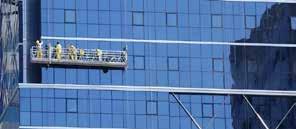
work at a condo, a basic expectation is that everyone will treat each other with decency and respect, and will not engage in harassing, discriminatory or violent behaviour.


Why is such a rule not part of the standard set of rules in every condo from the very beginning? Maybe because it is just common sense and everyone expects this without having to say so. However, for a condo corporation facing a situation where there is harassment, discrimination or violence occurring, having a rule in place which they can use for enforcement purposes makes it much easier for a board or manager to take action sooner in relation to this unwarranted behaviour.
The other alternative is to rely on s. 117 of the Act which prohibits dangerous activity that could cause damage to people or property. However, while the courts have recognized that harassing behaviour can be considered conduct that falls under s. 117, it would be much easier to deal with that behaviour once it starts as a breach of a rule rather than wait for the behaviour to get to the level that would meet the s. 117 threshold.
If we take a look at cases in which the courts have used s. 117 to deal with
harassment in condos, the type of behaviour that was presented to the court went on for long periods of time. Having a rule that specifies what type of conduct is and is not acceptable can be beneficial to condos when trying to put an end to that behaviour sooner than later.

While to many it is just common sense and decency to act appropriately around fellow owners, residents and workers, sometimes you will run into a situation where this common sense needs to be clearly spelled out in a rule. Having such a rule in place is preventive medicine.
In addition to implementing a rule, there are some other things boards and property managers can do to help curb this type of behaviour and deal with difficult situations. While this may not stop all instances of harassment, discrimination or violence, it may prevent a difficult situation from turning into one.
At the November 2022 CCI Huronia webinar entitled, “Difficult People or Difficult Situations: Are they the Same?”, a panel of speakers, including myself, offered some useful tips on dealing with these challenges. Here are my top five takeaways from that webinar.

Separate the problem from the person. Address the problem and don’t make it a personal attack on the person. It is not an “us” vs. “them” proposition.
Look in the mirror. What are “you” doing to make the situation more difficult to handle.
Be proactive. Think about your tone and content of communication so you do not make the situation more difficult. Perhaps use your first letter as an opportunity to educate and open a conversation about the situation rather than just telling someone they are doing something wrong. Keep in mind cultural issues and language barriers.
Be transparent and employ the open book principle. Situations and people become more difficult when there is a feeling that something is being hidden.
Learn more about mental health issues and resources available in your area to be able to assess whether or

not you are dealing with a mental health issue and if you are located where you can get assis tance. Not every difficult person has a mental health issue but sometimes an underlying men tal health issue can explain behaviour and may alter how you handle the situation.
Finally, it is important to remember the limits of a board member or property manager’s capabilities. Far too often, owners contact the board or property manager because they are scared of someone’s behaviour or a situation. Educate your owners about when they should call the police instead. Certain types of harassment can be Criminal Code offenses and the police should be involved.
In situations where someone faces or fears imminent harm or danger, condo directors and property managers are not equipped to respond to these types of situations and shouldn’t be expected to get in harm’s way and become the target of harassing, violent or discriminatory behaviour. 1

Sonja Hodis is a litigation lawyer based in Barrie who practices condominium law in Ontario. She advises condominium boards and owners on their rights and responsibilities under the Condominium Act, 1998 and other legislation that affects condominiums. She represents her clients at all levels of court, various Tribunals and in mediation/ arbitration proceedings. She also acts as mediator or arbitrator in condo disputes. Sonja can be reached at (705) 737-4403, sonja@hodislaw.com or via her website at www.hodislaw.com.
This article is provided as an information service and is not intended to be a legal opinion. Readers are cautioned not to act on the information provided without seeking legal advice with respect to their specific unique circumstances. Sonja Hodis, 2022 All Rights Reserved.
The CCI Huronia webinar, “Difficult People or Difficult Situations: Are they the Same?” can be accessed here: https://ccihuronia.com/events/2022/10/21/lunch-and-learnwebinar-october-2022 or at https://www.youtube.com/watch?v=gQeb5KHEGQQ

The what, how and why for employers
Ontario
BY TIFFANY THOMAStransparency in the workplace by introducing legislation requiring employers with 25 or more employees (as of January 1, 2022) to have an electronic monitoring policy. Bill 88, the Working for Workers Act 2022 became law in April and requires employers to be transparent about how they monitor their employees’ use of devices such as computers, cell phones and GPSs.
has taken the lead in terms of enhancing employer
While the deadline to prepare the policy was October 11, 2022, it is better late than never to get an electronic monitoring policy in place. Once drafted, the policy must be presented to employees within 30 days.
email, work calendars, social media activity, as well as the amount of time spent doing each of these. Hardware such as GPS installed in company vehicles are also likely to be electronically monitoring employees.
I don’t even know if or
The introduction of this new bill has been an eye-opener for many employers who were previously unaware of it or how electronic monitoring was taking place in their workplace. A helpful tip to get you started is to consult your IT department or IT provider and ask them to create a list of the hardware and software that could be monitoring your employees. This may unearth some overkill monitoring and data collection — passive and unintentional, or otherwise.
Employers can use monitoring programs that track the websites that employees visit (even when in private browsing mode), apps they’re using, inter-office chat groups, work

The reality is that most employers are busy running their businesses and are not bothered with especially intrusive electronic monitoring measures, like reviewing data from programs that count an employee's keystrokes in a day. However, if needed, employers are permitted to monitor to confirm an employee’s work and whereabouts, and whether they may be doing something that violates company policy or requires further investigation. The new legislation does not increase employee privacy rights. Rather, it creates an employer obligation of transparency: employers must now outline what electronic monitoring will occur and how the information may be used.
As always, to reduce the risk of constructive dismissal or privacy-related
claims, employers need to ensure that their monitoring is reasonable under the circumstances and necessary for employment-related purposes (e.g., workplace safety and security, protection of confidential and proprietary information, attendance and performance management, etc.). To meet the transparency requirements of the policy, the ‘what, how and why’ of electronic monitoring practices must be set out in the electronic monitoring policy.
At a minimum, an electronic monitoring policy must set out:
• whether the employer monitors employees’ electronic devices;


• how and in what circumstances the employer may monitor employees;
• the purposes for which information obtained through electronic monitoring will be used by the employer; and
• the date the employer prepared the policy and, if updated, the date of any policy changes.

Without identifying your clear purpose in collecting the data, you may run into some legal difficulties should you try to rely on the data for reasons other than what is stated in your policy. If, for example, you are collecting data for the sole purpose of discipline, say so. Otherwise, you risk not being able to rely on what you learn from the data when you need to actually discipline your employee.
control over. There may be instances of unethical behaviour they are powerless to stop, and interpersonal conflict will be a daily occurrence because the Condo Act and various condo documents are adversarial in nature. Ultimately, this breeds contention. A manager may feel anxious, frustrated, alone and ask: “Why am I here”?
Nor is this a 9-to-5 career. Clients have monthly meetings with often late nights; the workload keeps managers past “office hours,” into the weekend sometimes. Calls come in past 5:00 p.m. to address various types of emergencies, ranging from multi-floor floods to fires and major equipment breakdowns.
Employers are required to identify every way they are electronically monitoring employees and how they might use the data collected. Therefore, they should think carefully about keeping programs around that are overdoing it when it comes to the sort of data and monitoring the program is doing.
Managers now face a high risk of burnout and there is a mental health crisis in the industry with few resources to help. Meanwhile, condo boards today want a manager who is capable of withstanding all this pressure.
If employers take a purposeful and practical approach and limit their monitoring to only what is necessary and reasonable (and effective), it is more likely to be accepted by employees. Be very clear about how
But for those keen on dealing with people from all walks of life, while not being glued to a desk, this is also a wonderful time to work
in this profession. Managers get to service communities and residents, learn new and exciting topics, which make for a well-rounded working life, and become leaders in the corporations they service, in the industry and in the communities where they live.
the collected data will be used. If, for example, the program is only essential for legitimate business reasons and there are no plans on using it for reasons that are very scary to employees (i.e. discipline and termination), be sure to say so — this will help in keeping workers calmer and happier. Assuming that the loss of employee privacy is proportionate to the benefit gained, and there was no less intrusive method of gathering the information, then all should be fine.
Crisis management will be your forte. People skills will be your sword and shield. Knowledge and ability to adapt will be your power.
3. The data collected from the GPS systems is being used to ensure employee safety and compliance with company policies and procedures.
There is a higher purpose in this line of work. Over a million residents live in condos, and more buildings are being built today than ever before. To provide service to residents, especially in the vicinity of their home, is a challenging and fulfilling task. To preserve their assets and the assets of the corporation is the obligation and duty under the Act. That ultimate sense of duty to serve is what calls to this industry. This is the most opportune time to answer the call.
The rush from successfully problem-solving an issue is intriguing, with time spent prolonging the lifespan of equipment through proper maintenance and adhering to manufacturers’ recommendations and best industry practices.
After compiling a list of how employees are being electronically monitored, turn your attention to drafting the policy. For example, if company cars have GPS systems that are electronically monitoring employees, the policy should state, at a minimum, the following:
1. The company is electronically monitoring;





2. GPS trackers installed in company cars are tracking employee movements throughout the day; and
Managers are involved in replacing major components of the building’s assets to preserve the best interests of the corporation, formulating and maintaining an annual plan that keeps the wheels of the corporation turning, and servicing residents administratively.
Finally, don’t forget to date the policy and note the date of any updates to the policy. This policy is all about transparency so listing only some of the ways or a few examples of how employees are being electronically monitored won’t cut it. A key goal of any properly implemented and reasonable electronic monitoring policy should be to deter unauthorized workplace conduct, not to create a gotcha moment. Aren’t we all on our best behaviour if we know we might be watched? 1
To be able to execute on a high level in a fast-paced environment, learning is the key ingredient. During the span of a condo management career, people learn about the building and workings of condo communities, as well as other aspects of professional life.



There are great service professionals, trades and vendors to meet. Through them or inadvertently, there is much to learn about laws, government structures and corporate governance affecting condo corporations.


Tiffany Thomas is a lawyer at SpringLaw, a virtual law firm practicing exclusively in the areas of employment, labour and human rights law. Tiffany works with both employers and employees to resolve their workplace issues. She can be reached at tthomas@springlaw.ca. www.springlaw.ca












Water damage is among the most common (and costly) issues in property management. From leaky pipes to foundation cracks, roofing tears to envelope holes, there are plenty of opportunities for water to wreak havoc. However, like many property management challenges, a mix of modern tech and proactive strategies can turn the tide.
“Water damage affects buildings on so many levels and can happen anytime,” says Brendan Murphy, Director of Client Solutions with First Onsite Property Restoration. “In fact, nearly 70 per cent of the emergencies we respond to are a result of property damage caused by water-related events.”
Those events can be large-scale weather events, such as floods, thunderstorms, and hurricanes. They can also be hidden or “easy to miss” leaks that cause extensive damage to properties over a period of time. Moreover, untreated water damage can trigger the growth of harmful mould that puts building occupants at risk.








As with any property management risk, prevention is key. Herein, advances in water monitoring and leak detection systems give building management teams the ability to spot and respond to water damage risks the moment they begin to form. This proactive approach is critical for reducing losses and giving tenants a heads up.


“The sooner you can respond to water damage, the better,” says Murphy. “That’s why the best systems are those that alert the right people to problem areas quickly so that you can avoid costly remediation, longer disruption to services, and increased operational costs and efforts.”
For its part, First Onsite has formed partnerships in the tech community to offer solutions for 24/7, real-time water monitoring and analytics. This includes devices that can be installed in strategic locations to detect leaks the moment they occur and send alerts via text, e-mail or phone call to the appropriate internal and external responders. Solutions also include smart sensor technologies that monitor when water consumption patterns or humidity levels fall outside of acceptable ranges.
The data collected from these technologies can also be used to generate automatic graphs and reports that can then be used to identify areas for improved

efficiency, spot abnormal trends, or even benchmark water consumption across an entire portfolio.
























“The technology does more than bring attention to potential emergencies; it provides that continuous flow of real-time water usage data that enables building teams to see where they’re using the most water and take appropriate steps,” adds Murphy.
The conservation advantage Properties of all kinds are always prone to water damage. The good news is that property teams have access to the technologies and expertise to catch issues at their source and practice smarter consumption at the same time.
WFirst Onsite Property Restoration is one of the largest and fastestgrowing emergency response planning, mitigation, and restoration service providers in North America. To learn more about water monitoring proptech, contact Brendan Murphy, Director of Client Solutions, at bmurphy@firstonsite.ca. For more, visit firstonsite.ca

More than 22 per cent of Canadians have at least one disability, the majority of which are not visible to security staff, condo managers or boards of directors. Add to that the six million-plus Canadians who are 65 years and older. By 2030, in less than one decade, seniors are estimated to total around 9.5 million and make up 23 per cent of the country’s population.
Over the past several years, designers, condo boards, law firms and managers have grappled with ensuring that people of all abilities have equal access to common elements and condo communications, which includes the means to quickly exit buildings during an emergency or fire event. But in some cases, auditing for accessibility upgrades within building renovation projects is viewed as a potential roadblock that might delay work or cost too much.
Ontario's Accessibility for Ontarians with Disabilities Act (AODA), which took effect more than 16 years ago, has

been a beacon for similar legislation across Canada, but condo owners and visitors in the province continue to face daily barriers. And there is an even more imminent need to realize how people can live with dignity as Ontario aims to become accessible to people with disabilities by 2025.
All condo managers, management companies and boards of directors are required to provide accessible services, built environments, communications and technology, and emergency regress and wayfinding for all owners, tenants, and visitors. Besides the AODA, guiding
BY JANE SLEETHlegislation includes provincial and municipal building codes (accessible design), the design of public spaces (IASR) and, ultimately, the Ontario Human Rights Code and Tribunal.
Boards can also make sure condo management firms and building staff receive regular education and training about the legislation to ensure they are communicating with tenants and owners in an accessible way, taking into account people’s disabilities and age.
Managers and boards are encouraged to consult their condo’s legal team and inquire whether the corporation is at

risk of a human rights claim if various accessible services and inclusive public spaces are not provided.
The number one complaint type made across provincial, territorial and federal human rights tribunals is that people are being denied accessible housing and employment. Thirty-two percent of all human rights claims are related to a lack of equal access by people with disabilities and aging persons.
Penalties being awarded to condo owners who make human rights complaints are large in terms of monetary penalties. These amounts are increasing Canada-wide.
There is also brand damage and negative communications within the condo communities that could become an issue.
Looking ahead, there is much to think about, even seemingly simple details such as how to set up a party room before annual meetings. There is estimated to be over one million Canadians living with dementia by 2030, a disease which is largely invisible. Meanwhile, one in
three Canadians has diabetes, which is associated with many other types of disabilities, such as heart disease, stroke, amputations, and other medical issues.
Most condo owners and tenants, as well as visitors, will not disclose to condo staff (even when asked) that they have a disability. Some people are even unaware of a disability; for instance, many Canadians aged 40 to 79 years old are unaware that they have hearing loss.
Going forward it is crucial to focus on communication (are all condo owners offered meeting notes in an alternate format?) and the built environment of all public spaces. The starting place is to meet with certified experts in accessibility and accessible design and plan an approach and formal program that will, over time, lead to a condo that is inclusive by design.
Such programs need to include (by law per the AODA and Human Rights Code) how you communicate with condo owners and their families and friends, how a condo owner accesses the doors to amenities and how they navigate in and



around the building, as well as gain fast and safe egress during an emergency.


This includes the condominium’s websites and social media communication pages, the communication tools and even the intercom at the front doors.

Condos have until 2025 to ensure people of all abilities, age, gender, and size can fully access and equally enjoy their homes and public spaces. Now is the time to ensure that the 37.6 per cent of Ontarians who purchase and rent condominiums across the province are living with dignity. 1
Jane Sleeth is Founder and Principal Consultant with Optimal Performance Consultants. OPC is a firm specializing in the strategic auditing of accessibility both built environments and programs and in the development of formal effective accessibility and inclusive design condominiums. Established in 1990 Jane and her team bring years of deep experience in this field to all buildings, businesses, and condominiums.
Traditionally, one of the greatest
BY DOUGLAS BAKERhave had in terms of governance is getting simple responses from enough owners to make a positive difference. Board-by-default happens way too often because most owners are too busy to be bothered. Too often this leads to poor decision-making at the board level in governance over millions of dollars in assets and creates an inefficient and directionless management effort. Longer term, it leads to lower property values and much higher fees.
Apathy is high in governance, so much so that managers used to have to go doorto-door at the last minute to beg for proxy forms even to hold a valid AGM. That means fewer than 25 per cent of owners actively participated in the governance of their properties. With the development of AGMs by videoconference, largely thanks to COVID-19, we have seen an improvement at the local level. It is usually quite easy to reach quorum these days.
But that’s only part of the story. Often, individual board members hesitate to make decisions because they feel they don’t have
a good grasp on what the community wants, or the responsibility seems too enormous. Besides, condo communities exist for the purpose of shared ownership, which requires shared decision-making, and when there are decisions to be made that will affect the wallets of hundreds to thousands of co-owners, it is difficult to consistently put the weight of those decisions on three-to-five people.
How do we take owner participation to the next level?
What if there was an easy way to improve participation in governance to achieve a
higher standard, particularly on questions of significant importance?
If condos/strata are truly about community governance of shared properties, interested owners should have a way of providing meaningful input without spending time on a board of directors.

Enter the Decentralized Autonomous Organization, or DAO
A DAO in this case would be an association of condo/strata owners across a distributed tech network (think Internet) working together towards the same goal.
challenges managers
What are the technological components? Think of an Internet application platform such as Facebook. This would include a discussion forum to share ideas and ask questions, a secure electronic voting mechanism, and a mechanism to contribute funds for contribution to shared goals, such as optional common element fees for special projects, if applicable.
Participants in a DAO would include members, contributors and a board of governors. Members would provide input and expertise, make proposals for improvement, and vote on such proposals, including electing the board of governors. Contributors would be members who complete work tasks (usually administrative) for the DAO. Governors would be elected members who facilitate the activities of the DAO and complete work for the DAO. However, governors would not have decision-making authority. All members could take part in creating solutions based on common cause.
Currently, an owner can email a suggestion to the board via management, to be discussed at the next board meeting. The board can decide to act upon the suggestion or can ignore it. If they decide to get input from other owners, they can run an informal poll (non-binding) on a local platform or via email requesting responses by a certain date. They may get a few responses, or even up to the 25 per cent threshold discussed above, or more. They can then ignore or implement the suggestion.
In a condo-related DAO, owners would make proposals on the forum. Proposals would need to meet specific criteria in line with the condo declaration, by-laws and rules and with condo law. Otherwise, they would not be eligible for implementation. If a vote required funds to be spent, they would be automatically released based on the vote. The vote threshold for proposal implementation would be pre-set by the same process (voted on by membership, i.e. — 75 per cent of the vote is required for implementation) and vote results would be binding.
This would be more akin to direct participatory democratic procedure and would address complaints about the inability of interested owners to directly partake in the governance process. Prior to votes, education sessions could be held electronically and/or in person to ensure voters are aware of the implications of each vote.
DAOs are most useful for solving problems as a community. If there is a challenge that needs to be overcome and the solution benefits the community, a DAO is a good way to meet that goal. It brings in expertise and suggestions from the wider community and allows the collective voice to make important decisions, taking the pressure off individual board members. It is in line with the ethos of community ownership.
would a

A DAO could be used on a local level by individual condos and/or it could be used by the wider condominium ecosystem to solve greater challenges. An association of condos/strata could include a membership made up of (and, therefore, receiving contributions from) owners across the country or even worldwide to provide solutions to common industry/real estate sector challenges. Because DAOs run on
technological platforms or apps, there are no geographic restrictions to membership other than where incompatible laws may negate the implementation of a shared solution.
At a higher level still, a DAO of condominiums could be structured to give membership to condos/strata themselves, and individual owners from each condominium could contribute on behalf of their condo corporation.
The technology that makes a DAO possible There is a technological innovation that has been developing since 2009 called blockchain. Blockchain is just now maturing and is creating the next iteration of the Internet, being adopted by governments, the world’s financial institutions (i.e. JP Morgan), supply chain management and retail companies (i.e. Walmart) and tech companies such as Google, Microsoft and Amazon.
DAOs are just one use for blockchain, and they are already revolutionizing the way many private companies govern themselves and manage assets. As blockchain applications continue to develop better user interfaces, adoption will undoubtedly grow to include other aspects of condo/strata management. 1
Douglas Baker is an Ontario Licensed Condominium Manager with seven years experience in the industry and is currently working remotely from Thailand. He has an educational background in technology and worked as a Programmer/Analyst in Toronto’s financial sector.


Redefining the city skyline with two record-breaking towers, Bristol Place will reach new heights as the tallest condominium towers in Brampton.
With the first of two towers recently launched, Bristol Place tops off at 48 storeys near Queen Street and Main in the heart of downtown Brampton and at the hub of the city’s innovation and entrepreneurship ecosystem.
The Toronto-Brampton-Waterloo Innovation Corridor is aiming to be the second largest tech sector in North America. The new hub will feature a central library, flex office spaces, and the future head office campus of Rogers Telecom.
The newest development by Solmar Development Corp will rise above a multi-storey podium set within a landscaped courtyard and feature one- to three-bedroom space-saving layouts.

A dedicated full floor of social, fitness and entertainment amenities will mostly be located on the podium’s innovative green roof. Two towers will share a professionally landscaped courtyard garden with manicured walkways for residents to bond with neighbours.
Residents will have access to an electric ride-share program and an app that connects them to their community, with instant smart key access, facial recognition and package delivery updates.
the building and one to three bedroom units. Among the various amenities, a creative hub will be a space that meets the needs of today’s remote workers, younger professionals, entrepreneurs and creatives. The rooms feature spaces for recording content, performing music, as well as lounge seating where residents can brainstorm ideas and create.
“North York is a bustling, exciting neighbourhood in Toronto, and with NorthCore, we’re creating an even stronger civic identity for the area,” says Mitchell Cohen, Chief Operating Officer of Westdale Properties. “More than ever, the first consideration for buyers is, simply, location.”
Critical to the building’s design is privacy and creating a sense of enclosure for residents. Most of the balconies are recessed and integrated within the façade. The outdoor courtyard will also connect directly to the lush Albert Standing Park, extending residents’ connections to nature.
NorthCore, a boutique 16-storey mixed-use residence, is the first condo launched along the Yonge and Sheppard node in a decade.
Developers Fieldgate Urban and Westdale Properties announced the condo will front onto Sheppard Ave. West, with retail anchoring
“In many ways, NorthCore embodies all the great attributes of North York, transitioning seamlessly between the high-rise towers on Yonge Street to the lower density to the west,” says Mansoor Kazerouni, Director of Global Buildings, IBI Group. The building mediates between these two unique scales of the city and brings a new level of urbanity.”



